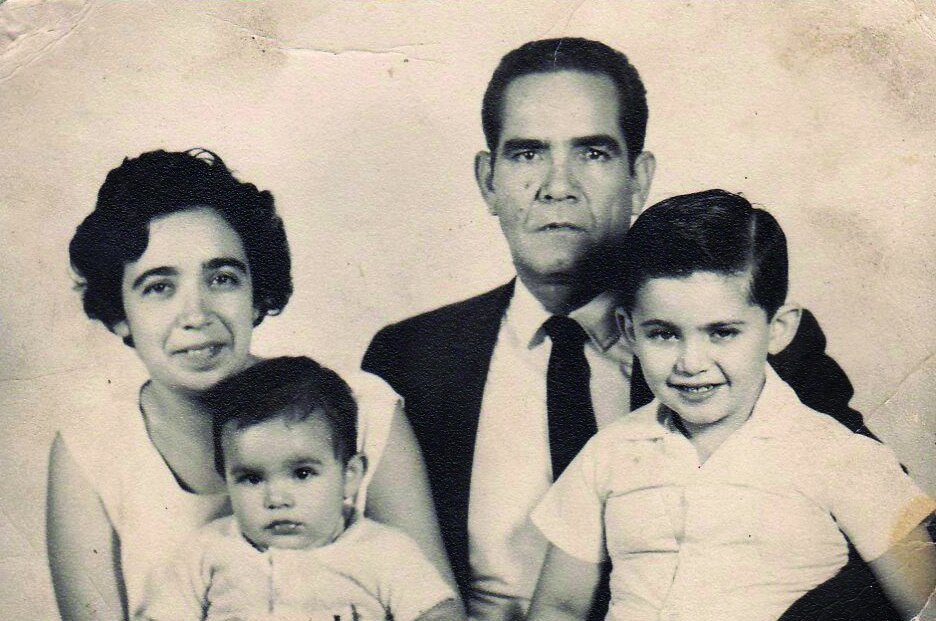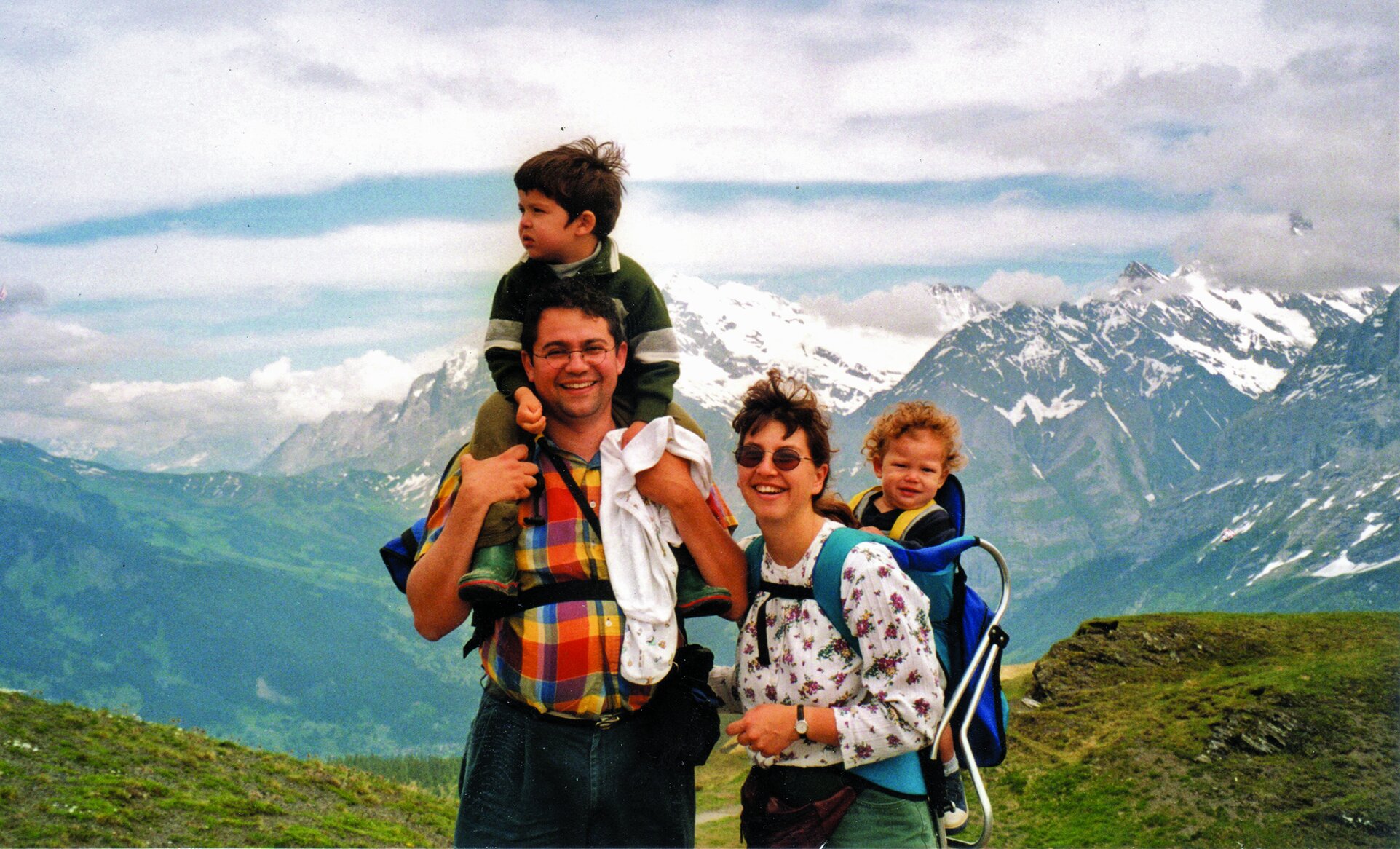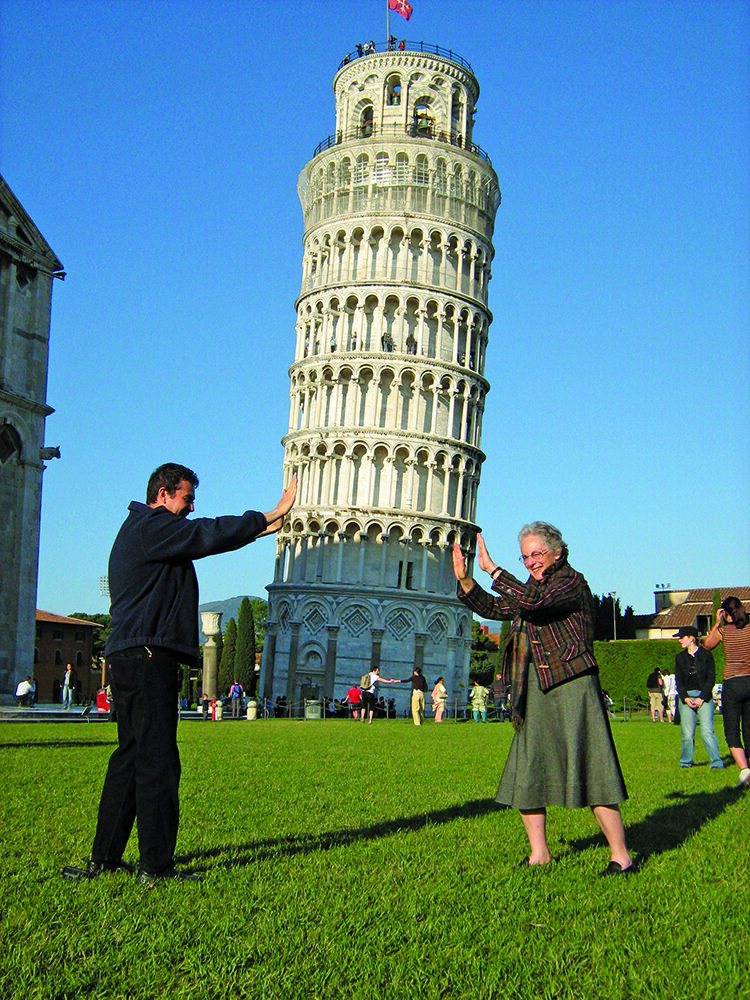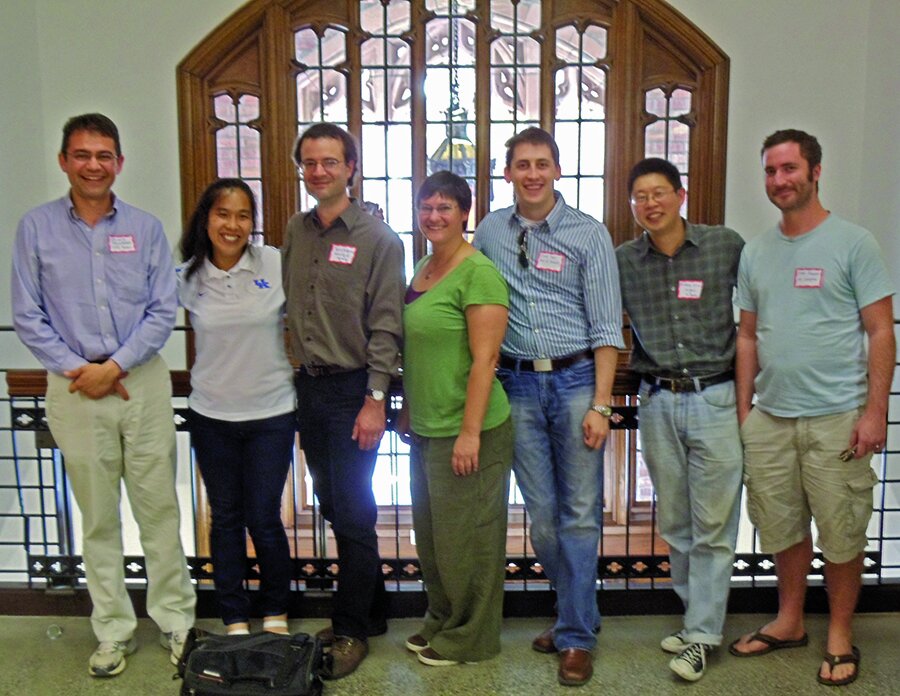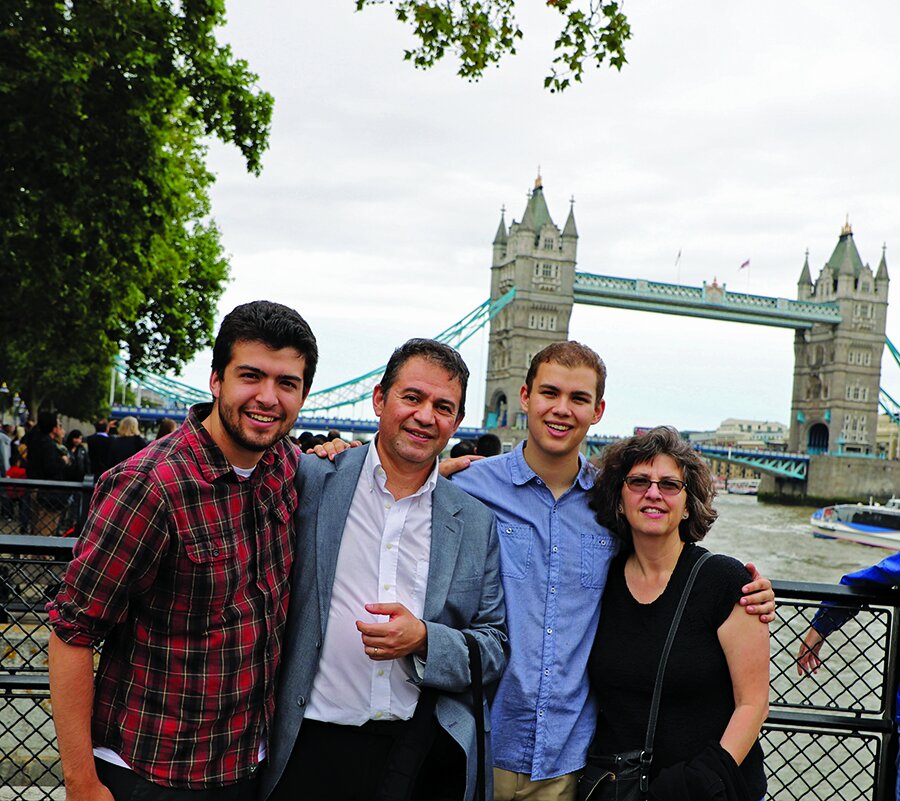Testimonios: Dr. Jesús A. De Loera Herrera
Testimonios, a new publication from MAA/AMS, brings together first-person narratives from the vibrant, diverse, and complex Latinx and Hispanic mathematical community. Starting with childhood and family, the authors recount their own particular stories, highlighting their upbringing, education, and career paths. Testimonios seeks to inspire the next generation of Latinx and Hispanic mathematicians by featuring the stories of people like them, holding a mirror up to our own community.
The entire collection of 27 testimonios is available for purchase at the AMS Bookstore. MAA members can access a complimentary e-book in their Member Library. AMS members can access a complimentary e-book at the AMS Bookstore. Thanks to the MAA and AMS, we reproduce one chapter per month on Math Values to better understand and celebrate the diversity of our mathematical community with folks who are not MAA members.
This is my story. I present it through my answers to three questions: Where did I come from?, Where am I today?, and Where am I going now?.
Dr. Jesus A. De Loera Herrera
Where Did I Come From?
I was born and raised in Mexico City, the huge city of twenty million stories and passions. I come from a middle-class Mexican family. My nuclear family was a bit unusual because my parents separated when I was young, so I was mostly raised by my mother Antonia Herrera Tejada and my grandmother Margarita Tejada de Herrera. My sister Judith is just three years younger than me. The four of us, and a bunch of dogs, formed my household.
I grew up on the edge of colonia1 Narvarte and went to elementary school at the adjacent, rough neighborhood of Buenos Aires. Because of this I faced some difficult experiences: my lunch was stolen, I was beaten on a couple of occasions by gangs, and the police harassed young people like me. These experiences made me aware of poverty, violence, and social injustice. Maybe because of the harsh reality I was living, books were my true friends: I could read and read all day long, or at least until my mother ordered me to go outside.
My father Jesús De Loera López was a remarkable man. He was a poor farmer with no more than a junior high education, who went from being a bracero2 during the 1940s to becoming a congressman and a gubernatorial candidate in Mexico. Sadly, my relationship with my father was broken. I was proud of his accomplishments, how he pulled himself up from nothing, and I wanted to emulate him, but we spent such little time together that he gave me nothing to hold onto.
My mother is an even more remarkable person to me! With little more than a secretarial degree and divorced from my father, she raised two children. She supported us, believed in all of our dreams, no matter how stupid or insane they were, and she sacrificed everything for us. She and my grandmother gave me lots of love, guidance, and a calm environment to grow.
My family and me.
I went to public schools in Mexico City. From very early on, I was always a diligent student, because I loved school, I was excited to learn, especially history. The principal of my elementary school had been a historian and he took a liking to me. He gave me books and encouragement. My mom really promoted learning as a way to improve oneself. At great expense and effort, my mom would take my sister and me to the pyramids and excellent museums around the country, which I loved.
When you work in math, people often treat you as gifted, but I do not think of myself in that way. I am actually quite slow to understand things, but I firmly believe that anyone that really loves something enough to try to be good at it, will become good at it. The very first time I remember loving mathematics was in middle school. My teacher asked us to carry a daily mathematics diary where we would complete our homework. When grading these, she gave prizes to clear, well-organized answers with explicit reasoning. I remember spending so much time making sure my answers were neat. I loved the introduction to basic axiomatic geometry proofs, using similar triangles and parallel lines. It was so much fun to give a solid argument! To know the truth!
After a successful national exam I was admitted to a high school associated to the National University of Mexico (UNAM). Preparatoria 6 is in the bohemian neighborhood of Coyoacán, very close to the house of Frida Kahlo and Diego Rivera and Trotsky’s last home. Me and my friends took advantage of the intellectual and artistic atmosphere of the area. I fell in love with astronomy and I helped to build telescopes at the Sociedad Astronómica de México, I wrote poetry and read the work of philosophers from Plato to Nietszche, and I learned to speak proficient French. I was blessed with a very rich intellectual atmosphere among my classmates too, who were also “coming of age’’ as thinkers and creators. Many of my classmates are now academics.
In high school my fascination with mathematics grew and I first became aware that I was fairly competent when I won third place in a high school mathematics competition. I loved scholarly and theoretical pursuits, but labs were not as exciting to me, so when it came time to decide for a college major I decided to study mathematics. Admission in UNAM was done by scores and grades: since I had the highest scores, I could have chosen medicine or law as my major, but I chose math because I loved it. Many people told me I was crazy not to choose a more conventional career.
My high school friends.
In retrospect, it was indeed an impulsive decision, purely based on a feeling. I had no idea what a mathematician did, no idea of what professional math really was about when I chose that career. Today, I can say with certainty that mathematics as a career is an excellent choice, with plenty of job choices and financial rewards too, but back then I did not stop to think about money and what I wanted in a job. All I knew was nothing gave me so much pleasure as mathematics did. Fortunately, my teachers gave me reassurances and my mother never once doubted my choice.
In 1984, I went to college at the Facultad de Ciencias of UNAM. This is a huge university, with more than 100,000 students in one campus. It offered me unlimited opportunities, but you had to push hard to be noticed. It was very hard. As a freshman, for the first time in my life, I felt really academically under-prepared. All of my classmates were so much smarter than me. Being the first to go to college from my father’s side of the family, I certainly felt like an impostor. But I persisted. How did I become resilient? It is hard to say, I feel it is mostly an inner fight. The Aztecs said, “un gran guerrero no es quien logra dominar a sus enemigos, sino aquel que puede dominarse a si mismo.’’ 3
During my university studies, I found that math was even more beautiful than I ever imagined! I truly loved the subject, and I could work until late hours of the night thinking about and enjoying the challenges from class, even when it was hard work. I quickly learned that mathematics is not a spectator sport! You learn math by doing math. Just like in music or sports, practice makes perfect.
My college mentors.
I was lucky to have brilliant classmates that made creating mathematics even more fun and exciting, like playing a soccer match! We would argue about theorems and proofs or about life and politics, until late into the night. In yet another lucky life event, I connected to four mathematicians who trained me and believed in me: In analytic geometry class I met Javier Bracho, an elegant geometer topologist who promoted imagination and colorful results. Later Francisco Larrión, an algebraist who took me under his mentorship and taught me to write mathematics and be rigorous. Victor Neumann, one of the founding fathers and elders of discrete mathematics in Mexico took me under his wing. I was his teaching assistant for graph theory and combinatorics and I discovered I enjoy teaching. Victor introduced me to Gilberto Calvillo, the first real applied mathematician I ever met, who at the time worked at the Bank of Mexico. He taught me about operations research and mathematical economics and I discovered that math is crucial to solving real concrete problems. Math became a power tool for analysis and decision-making, not just a beautiful creation. The artistic side of mathematics mingles really well with its applicable power.
With Ingrid in 1990.
The reality is, I am the mathematician I am today because these men were true mentors: they gave me a lot of their time, constructive criticism, and encouragement. I recognize today the value of being a mentor and a supporter of young talent. My 1989 senior thesis was in combinatorial topology and group theory. I gave a modern proof of the classification of planar Cayley graphs of finite groups, first presented by Matschke in 1899. That was the first time I heard about polyhedra, my favorite mathematical objects. In two dimensions, these are high school polygons. Cubes, crystals, and pyramids are examples in three dimensions.
In perhaps the luckiest event in my entire life, I met a truly brilliant and lovely physics student Ingrid Brust-Mascher, who was not only the top student in her class, but was to become my best friend and later my wife. Taking a risk, Ingrid and I left Mexico together in Fall 1989. In 1990 we got married, and attended graduate school at Cornell University in New York together. Ingrid was an applied physics PhD student, while I worked on my PhD in applied mathematics with a minor in operations research. Ithaca was a drastic change from Mexico City, but a welcome change for us as newlyweds. The life in the outdoors and true winters was a lovely new experience after the hectic life of the big city.
With Ingrid in 1995.
I did not know it at the time, but the late 1980s brought a remarkable group of mathematicians to Cornell. The Center for Applied Mathematics (CAM) was comprised of a diverse collection of researchers and graduate students whose work covered all areas of research. The director, John Guckenheimer, promoted new ideas and creativity. Lou Billera, who had made great contributions to mathematical optimization, game theory, and algebraic combinatorics gave me wise guidance. Mike Stillman, co-inventor of the computer algebra system Macaulay and one of the pioneers in making algebraic geometry computational, also influenced my way of thinking about mathematics. At the time of my arrival to Cornell several prominent Russian mathematicians, including Andrei Zelevinsky, Misha Kapranov, Sasha Barvinok, had visiting positions in Ithaca. The atmosphere was stimulating and engaging. In my first year I found the best PhD advisor I could dream of, Bernd Sturmfels, then a young rising star in the field of computational and applied algebraic geometry. Since then he has created a whole movement around computation in algebraic geometry (computing with systems of polynomials equations and inequalities). Bernd was my most important teacher. He believed in me and became a good friend. Once more a key mentor helped me improve and grow.
In those days I saw polyhedra appear everywhere, in applied mathematics, e.g., optimization and probability, and even in the context of pure math (algebraic geometry and topology). Polyhedra became the emphasis of my PhD dissertation and in fact my entire career. In my PhD work, I solved an open question of Gelfand, Kapranov, and Zelevinsky by finding an example of a non-regular triangulation of the Cartesian product of two simplices. I proudly used a computer-based proof. I also wrote a couple of papers on algebraic algorithms for manipulating systems of polynomials. To this day, this topic continues to fascinate me. I received my PhD April 25th, 1995. That same year in June, our first son Antonio was born. By the end of August, we drove across the country to take jobs at the University of Minnesota, two fresh PhDs with a young baby.
With Bernd Sturmfels in 1996.
My job was at the Geometry Center. There, with the emphasis on computers and geometry, my research style matured. While at Minnesota, Victor Reiner helped me to explore our common interest on geometric combinatorics. Our second son Andrés was born in Minneapolis, at a hospital by the Mississippi river.
With family in 1999.
After Minnesota, my second job was at the Computer Science Department in ETH Zürich Switzerland. I was hosted by the research group of Emo Welzl and Juergen Richter Gebert, both great friends who had a deep influence on me. The research atmosphere was creative and joyful. Those were happy times for me and my small new family. It was exciting to work on various problems in convex and discrete geometry and computational geometry while, on the weekends, I could escape with my children to the Swiss Alps.
While in Zürich I worked on the problem of finding optimal triangulations and subdivisions of polyhedra. I developed practical algorithms to find triangulations with the fewest number of simplices. For example, I discovered that the minimum triangulation of the regular dodecahedron has 23 tetrahedra. In 1999, I moved to the University of California, Davis to take on a tenure-track faculty position.
Where Am I Today?
As I write this recollection of my life I have already completed 20 years in the faculty! It has been a long personal and intellectual journey.
My work in combinatorics and discrete geometry, started as a PhD student, continues. My first book, written with my great friends Joerg Rambau and Francisco Santos, Triangulations: Structures for Algorithms and Applications, was published in 2010. It is a thorough reference on triangulations of polyhedra. By now, my scholarly work touches on several other topics.
I have made noteworthy contributions to the problems of computing volumes and integrals over polyhedral regions, and counting lattice points. These three computational problems have many applications, from pure math (algebraic geometry and representation theory) to applied combinatorics, probability and statistics (one is the analysis of contingency tables, see Figure 8.1). The software project LattE was started under my direction and initiative, with the purpose of carrying out those computations. LattE is used by many mathematicians and it helped to introduce dozens of students to research.
In the past ten years, my desire to work on more applications and computations has led me to apply algebra and geometry in the area of combinatorial optimization. This is the part of applied mathematics related to making optimal choices. A famous example of such problems is the traveling salesman problem: Given n cities that must be visited only once, and the costs cij of flying from city i to city j, the goal is to find the best order to visit all of the given cities in order to minimize the total cost of the trip. I am proud to have been one of the leaders of a new approach to the theory of combinatorial optimization. In this new point of view, we use tools from algebra, topology, and geometry, that were previously considered too pure and unrelated to applications, to prove unexpected computational or structural results. For instance, a long-standing geometric question I care about asks to bound the diameter in the graph of a polyhedron, that is, the maximum length of a shortest path between a pair of vertices in its graph (see Figure 8.1). This is relevant to understanding the performance of the simplex algorithm, one of the most influential computer algorithms in history. My second book, coauthored with Raymond Hemmecke and Matthias Köppe, is titled Algebraic and Geometric Ideas in the Theory of Discrete Optimization. This book is the first compilation of results from this geometric perspective.
Figure 8.1. (L) Two triangulations of a polytope. (C) Counting statistical tables. (R) A path of the simplex method.
I have also written many papers on convexity, such as my papers about variations of Carathéodory, Helly and Tverberg type theorems. I like theorems with colors! Tverberg’s theorem is one of my favorites: Suppose a1,…,an are points in Rd. If the number of points, is sufficiently large, namely n > (d+ 1)(m – 1), then they can always be colored into m color classes A1,…,Am in such a way that the m convex hulls convA1,…,convAm have a point in common.
All of these years of work I have been blessed with appreciation and recognition. For my contributions to discrete geometry, optimization, algebraic algorithms, and mathematical software, I was elected a fellow of the American Mathematical Society in 2014 and as a fellow of the Society of Industrial and Applied Mathematics in 2019. Through mathematics I had unique experiences, including traveling all over the world to conferences, discussing my work with some of the brightest minds, and being invited by the Obama White House to speak at the State Department.
Still, the most lasting reward is all of the students I have mentored. I have now worked with over 60 undergraduates on projects. It is rewarding to see them grow. Some of them are now professors themselves. My 14 former PhD students have gone on to make me very proud. I even had the pleasure of meeting some of my “academic grandchildren.’’ Of course, seeing my own biological children grow and prosper is also a great source of my life’s joy!
Where Am I Going Now?
The people I have met are the true rewards of my career.
I still have hope that I can create more mathematics in my remaining years and I am keeping up with new advances. Today, computers are essential to the discovery of results, even in pure mathematics, but I see new opportunities as we enter a new era of computational mathematics. First, new methods, that rely on formal logic, make mathematical assertions automatically verifiable with higher certainty. It is not only the computer carrying on calculations, but also the logical components of the proof itself, including all the background theories. A second major shift is how data science and artificial intelligence are driving new mathematical questions. Finally computers and technology (e.g., online courses, Zoom) continue to change mathematics education and collaboration. I will focus my energy to think about such research.
If you have read this far you now know my story and it should be fairly obvious that my journey was only possible because I found people willing to support me. I did not arrive here all by myself. I would like to dedicate time to make mathematics accessible to everyone, especially young Latinx people who can later take my place in the circle of mathematical creation. The most important contribution I will ever make is the people I helped along their journey.
The rising Latinx population indicates it is in everyone’s best economic interest to make sure Latinxs can have access to mathematics and science. As I write this testimonio, the world is engulfed in a pandemic, that has uncovered the deficiencies and the inequality that exists in our society. Thus, fighting for equity and inclusion in STEM is one of my most important duties.
Parting Words
Dear young reader, if you have fallen in love with math, I urge you never to give up in your passion. Let that love guide your education to become the mathematician you dream to be. Do not give up in the hard moments of disappointment. Rest, but do not desist, persist! Always remember that an expert is someone who has failed enough times to understand how to avoid pitfalls. There are teachers and other students who are willing to help. There is nothing wrong with asking for help and guidance. Seek the mentorship and company of people that will support you and care for your dreams. Then, one day, you will become the expert, the teacher, the mentor. Take that place proudly and be generous and humble. Remember where you came from. Your journey was only possible because of others that came before you.
I wish you a healthy, balanced, and wise life. One where you have the time to think deeply about the world and others.


